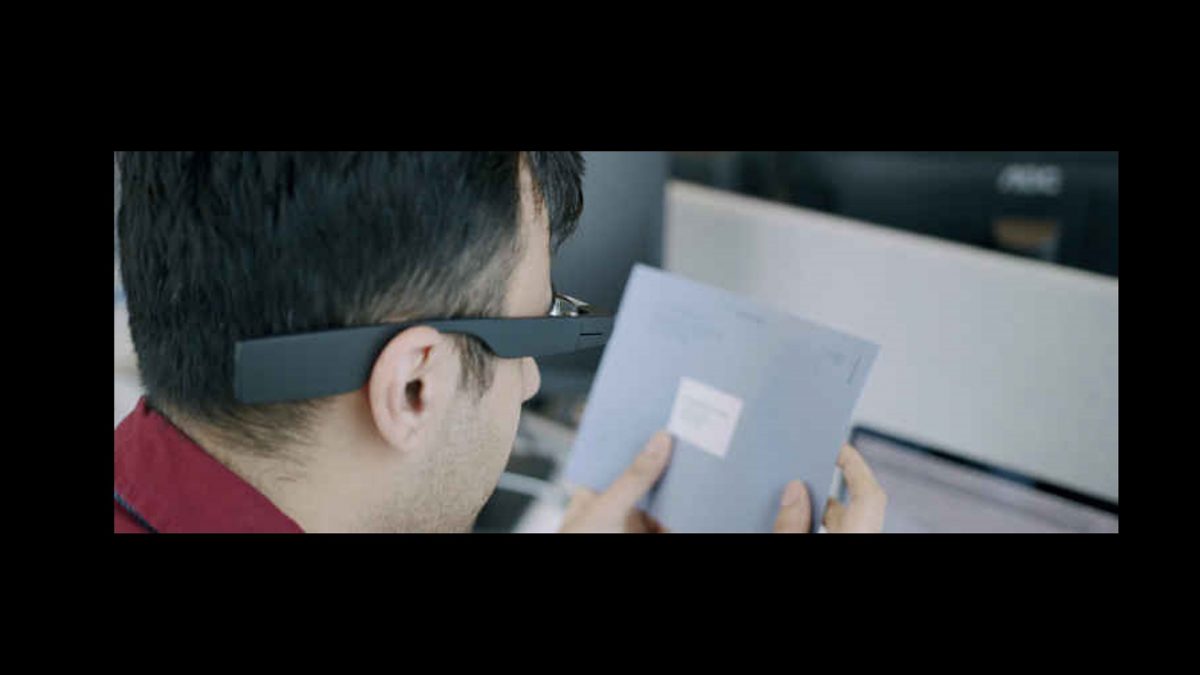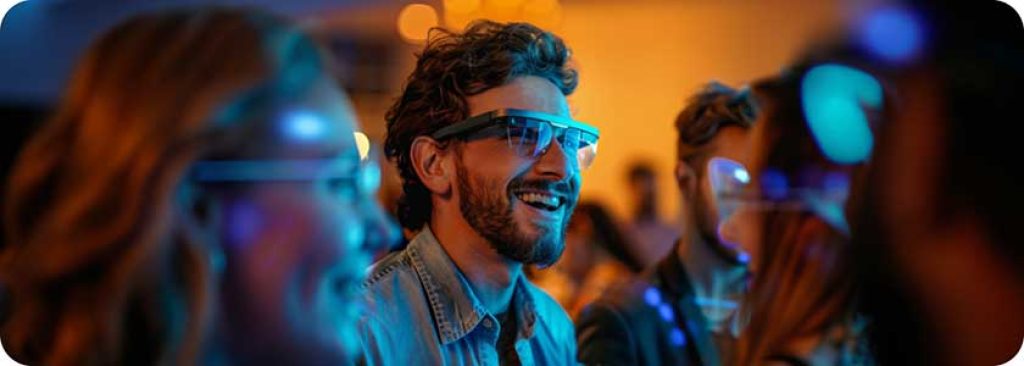Ingenious Solutions in Assistive Modern Technology for Visual Disability
The landscape of assistive modern technology for aesthetic problems is advancing swiftly, offering a range of innovative remedies that improve ease of access and independence. From sophisticated smart device applications that promote navigation to wearable tools made for real-time advice, these devices are reshaping the experiences of those with aesthetic problems. In addition, the integration of wise home innovations and educational resources has the potential to cultivate greater area involvement. However, the implications of these improvements elevate critical inquiries regarding their availability and performance in diverse contexts, warranting a closer assessment of their broader influence.
Innovations in Smart Device Applications
Over the last few years, innovations in mobile phone applications have actually dramatically changed the landscape of assistive technology for people with aesthetic problems. These applications utilize the effective sensors and capabilities of contemporary mobile phones to give users with tools that improve self-reliance and access in their lives.
Significant among these innovations are applications created for object acknowledgment, which utilize the smartphone's cam to determine items and offer spoken descriptions. Such functions encourage customers to navigate their settings extra effectively, whether determining items in shops or situating personal belongings in the house. Additionally, text-to-speech applications have actually enhanced dramatically, allowing users to record printed message with their gadget's video camera and obtain instant audio comments, consequently facilitating analysis and understanding.
Navigating applications customized for aesthetically damaged users have additionally arised, using auditory guidance and detailed location details. These tools supply critical assistance for wheelchair, allowing customers to go across strange rooms with confidence. Community-driven applications have promoted social communication and resource sharing among individuals with visual problems, producing a helpful network that boosts their high quality of life. On the whole, mobile phone applications have come to be indispensable allies in advertising autonomy and availability for people with visual disabilities.
Wearable Devices for Navigation
Wearable tools for navigating have actually arised as a groundbreaking service for people with visual impairments, supplying hands-free help that boosts movement and positioning. These tools typically utilize innovative technologies, consisting of GPS, ultrasonic sensors, and artificial intelligence, to supply real-time responses and direction to users as they navigate their setting.
One significant example of wearable navigation technology is clever glasses, which can detect obstacles and relay auditory or haptic feedback to the wearer, enabling risk-free and effective motion in various setups. Other devices, such as vests and belts outfitted with sensors, can likewise inform individuals of their surroundings by providing notifies about nearby items or changes in terrain.
Additionally, lots of wearable tools incorporate with mobile phone applications, allowing customers to personalize their navigation choices and get tailored course ideas. This personalization can significantly improve the individual experience, equipping people to take a trip with higher confidence and self-reliance.
As technology remains to create, the possibility for wearable navigation gadgets to enhance the lifestyle for individuals with aesthetic disabilities continues to be significant, leading the way for more inclusive and accessible environments.
Smart Home Technology Integration

In addition, wise devices furnished with responsive user interfaces or acoustic feedback supply instinctive communications that cater specifically to the needs of those with visual disabilities. For circumstances, clever fridges can announce their contents and expiration days, while smart ovens can guide individuals through the cooking procedure with audio guidelines.
Home automation systems, such as smart doorbells and protection cams, provide comfort by permitting individuals to get informs and gain access to live feeds link by means of their mobile phones, improving personal safety and security (AI-powered visual aids). Furthermore, integration with smart devices and tablet computers guarantees that users can manage their home setting from anywhere within their premises
As wise home technology remains to progress, it holds the potential to change the living experiences of individuals with aesthetic disabilities, fostering freedom and boosting lifestyle in an increasingly linked world.

Educational Tools and Resources
Accessibility to effective instructional tools and sources is vital for individuals with aesthetic impairments, as it encourages them to engage completely in their discovering experiences. Different assistive innovations have actually been created to improve accessibility and foster independent knowing. Display readers, for example, convert message right into speech, allowing pupils to accessibility electronic content effortlessly. AI-powered visual aids. Additionally, refreshable braille display screens offer responsive feedback, making it simpler for students to connect with composed material.
Moreover, educational software application particularly made for visually damaged individuals supplies functions such as high-contrast settings and adjustable text dimensions. redirected here These devices accommodate varied discovering styles and ensure that pupils can customize their academic experience to their demands.
Moreover, access to electronic collections and audio books broadens the series of offered discovering materials, making it possible for pupils to check out subjects in depth without the restrictions imposed by typical print resources. Collaborative systems that integrate availability features likewise assist in group projects, ensuring that aesthetically impaired students can contribute meaningfully together with their peers.
Community Support and Involvement
A durable network of community support and interaction is vital for individuals with aesthetic disabilities, promoting an inclusive environment where they can thrive. Area organizations, local campaigning for groups, and volunteers play a pivotal duty in supplying sources, info, and friendship, which are essential for enhancing the high quality of life for those affected by aesthetic impairments.
Involvement tasks such as workshops, get-togethers, and support system not only facilitate ability advancement but likewise advertise social communication, minimizing feelings of seclusion. These initiatives encourage individuals to share challenges, experiences, and successes, thereby reinforcing area bonds. In addition, collaborations with neighborhood organizations can bring about better access in public areas, additionally incorporating people with aesthetic disabilities into the community.
Modern technology additionally improves neighborhood engagement via on-line platforms that use digital assistance teams and sources, enabling individuals to attach no matter of geographical barriers. By harnessing both in-person and electronic services, communities can produce a detailed assistance network. Inevitably, fostering cooperation among various stakeholders-- consisting of households, educators, and medical care experts-- ensures that people with visual disabilities get the holistic support necessary to browse every day life properly and with self-respect.
Verdict
Cutting-edge services in assistive modern technology for aesthetic disability substantially improve the quality of life for individuals dealing with these challenges. The combination of smartphone applications, wearable gadgets, smart home innovation, and instructional tools cultivates greater self-reliance and access. Neighborhood support and engagement further empower aesthetically impaired people, advertising inclusivity and engagement in various aspects of life. Collectively, these innovations not only transform daily experiences but additionally lead the way for an extra fair visit this site right here culture.
The landscape of assistive technology for aesthetic problems is developing swiftly, providing a variety of ingenious services that improve ease of access and self-reliance. Community-driven applications have promoted social communication and source sharing amongst individuals with aesthetic disabilities, creating an encouraging network that enhances their quality of life. Generally, mobile phone applications have actually become essential allies in promoting freedom and access for people with visual impairments.
Numerous people with aesthetic disabilities are finding better freedom via the integration of clever home technology.Cutting-edge services in assistive innovation for visual disability substantially boost the quality of life for people dealing with these challenges.